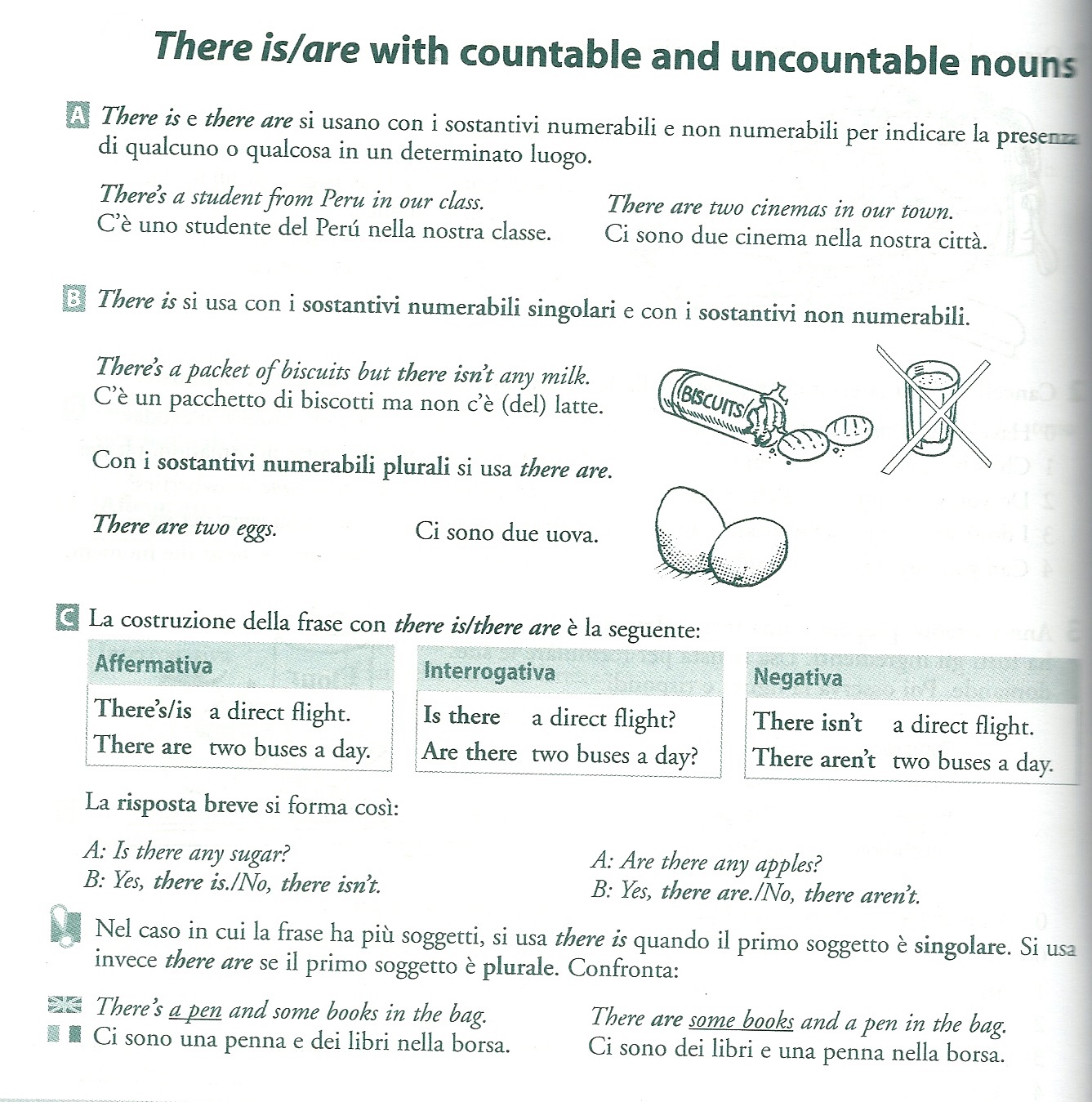Today’s English grammar tip will be there is (singular) and there are (plural). We use “there is” and “there are” to say that something exists. Let’s see how to use and form them by looking at the examples below.
Oggi scopriremo come utilizzare “there is” e “there are“. Il primo si traduce con “c’è”, al singolare, mentre il secondo con “ci sono”, al plurale.
Positive Sentences
There is a car in the garage.
C’è una macchina in garage.
There are three chairs in the classroom.
Ci sono tre sedie in classe.
There is a book on the table.
C’è un libro sul tavolo.
There are five kittens in the basket.
Ci sono cinque gattini nella cesta.
We normally use “there is” with contractions. For example:
Di solito con “there is” usiamo le contrazioni. Ad esempio:
There’s a car in the garage.
There’s a book on the table.
We cannot use contractions with “there are”.
Non possiamo usare le contrazioni con “there are”.
Negative Sentences
The negative is formed by putting not after “is” or “are”. Here are some examples:
La forma negativa si crea mettendo “not” dopo al verbo. Ecco alcuni esempi:
There is not a horse in the field.
Non c’è un cavallo nel campo.
There are not eight children in the dining room.
Non ci sono otto bambini nella sala da pranzo.
There is not a tree in the garden.
Non c’è un albero in giardino.
There are not two elephants in the zoo.
Non ci sono due elefanti allo zoo.
Negative contractions are:
There is not = There’s not / There isn’t
There are not = There aren’t
Questions
To form questions we put “is” or “are” in front of “there”. For example,
Per formare le domande mettiamo “is” o “are” prima di “there”. Ad esempio:
Is there a person in the house?
C’è qualcuno in casa?
Are there any oranges in the fruit bowl?
Ci sono arance nella ciotola?
Is there any sugar in this cake?
C’è zucchero nella torta?
Are there any kids in the park?
Ci sono bambini al parco?
